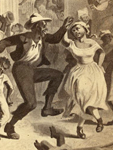The Brown v. Board of Education National Historic Site commemorates the U.S. Supreme Court's 1954 decision in the Brown v. Board of Education case, which ended legal segregation in the public school system. The site is located within one of four former African American elementary schools, the Monroe Elementary School. The school has been restored to a 1954 appearance. Permanent exhibits address relevant people, places, and events; the feelings of being subjected to discrimination; and the impact of the case. Computer consoles invite visitors to share their own experiences.
The site offers a ranger-led orientation, a 25-minute introductory film, interactive and traditional exhibits, 90-minute tours for students, outreach presentations for students, distance learning programs, Junior Ranger activities, and access to a non-circulating research library. Picnic tables are located in the nearby Cushinberry Park. Access to the library is by appointment only. The website offers historical photographs, an interactive activity, scavenger hunt worksheets for third grade through high school, an electronic field trip, a DVD and teacher's guide, Teaching with Historic Places lesson plans, a web quest, children's activities, and a curriculum kit.
